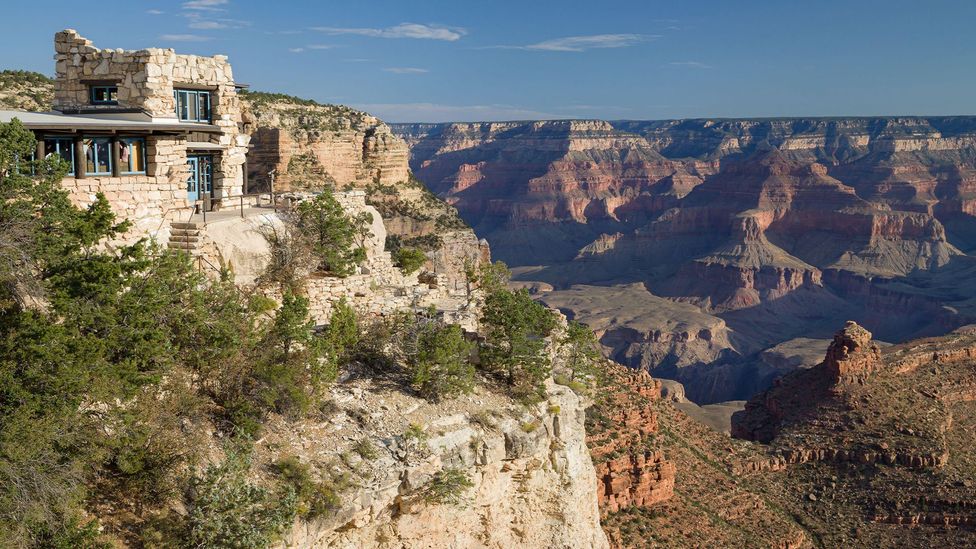Standing at the edge of the Grand Canyon, most people peer, awestruck, into this mile-deep chasm. But I was here to see the 70ft-high tower clinging to the canyon's rim. Built in 1932 and inspired by ancient Native American structures, the Desert View Watchtower is the work of Mary Colter (1869-1958). One of the few female architects of her time, Colter rejected European design in favour of buildings rooted in the Native American and Spanish heritage of the US Southwest.
Colter designed everything from the hacienda-style La Posada Hotel in Winslow, Arizona (1930), to the interior of the Painted Desert Inn in Petrified Forest National Park (1947). But her iconic Grand Canyon buildings provide the best evidence of how she helped early (mostly white) tourists better understand how the region is home to diverse, millennia-old Native American cultures and civilisations.
Of the millions of people who visit the Grand Canyon annually, few know Colter's story. She never married or had children. Instead she became the go-to architect for two companies working in tandem to "open" the American West (already inhabited by Native Americas) to settlers and later tourists following the US Civil War (1861-65): the Atchison, Topeka and Santa Fe Railway (nicknamed the Santa Fe); and the Fred Harvey Company, which built restaurants and hotels along the route.
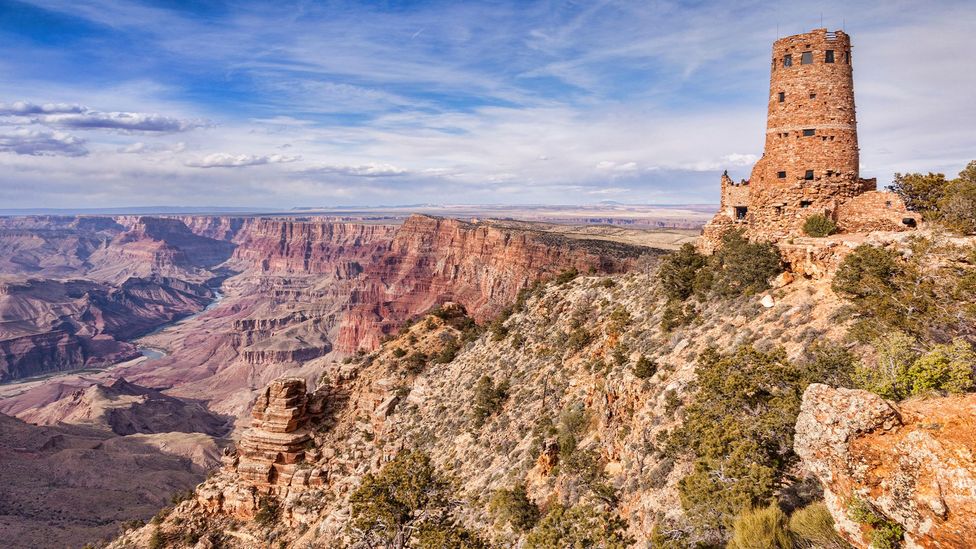
The Desert View Watchtower clings to the Grand Canyon's rim and was inspired by Native American structures (Credit: travellinglight/Alamy)
The two companies felt there were no decent hotels and affordable food along Santa Fe's rail line were hard to find. In the 1880s, the Santa Fe joined forces with Fred Harvey to lure tourists to the Southwest by commissioning the building of high-quality accommodation along the line.
Colter freelanced for Harvey from 1902 to 1910, when she was hired full-time, and she remained Harvey's go-to architect until 1947. She designed hotels, curio shops and rest areas, channelling the region's landscapes and cultures. Her Pueblo-style plaster walls, exposed wood and stone and niches for saints helped define the vernacular design style of the US Southwest. Her design choices were governed by the backstories she imagined for her buildings. La Posada was a Spanish ranch-style building of the early 1800s, Hermit's Rest the refuge of a rustic mountain man, The Desert View Watchtower an ancient Indigenous edifice guarding the canyon.
Though white, Colter was a lifelong student of Native American art and architecture, and her "vision" of the Southwest helped educate tourists about Native American culture. Colter was a pioneer in a male-dominated field, "in charge of important commissions that have stood the test of time and are part of America's cultural heritage," said H Ruth Todd of Page & Turnbull, a female-led architectural firm that has restored several of Colter's Grand Canyon buildings.
Architectural designer Geraldene Blackgoat (Navajo) said that while she didn't learn about Colter in school, "which focused mostly on white male architects", she "gives Colter credit for using her privilege to acknowledge and pay tribute to Native American vernacular design".
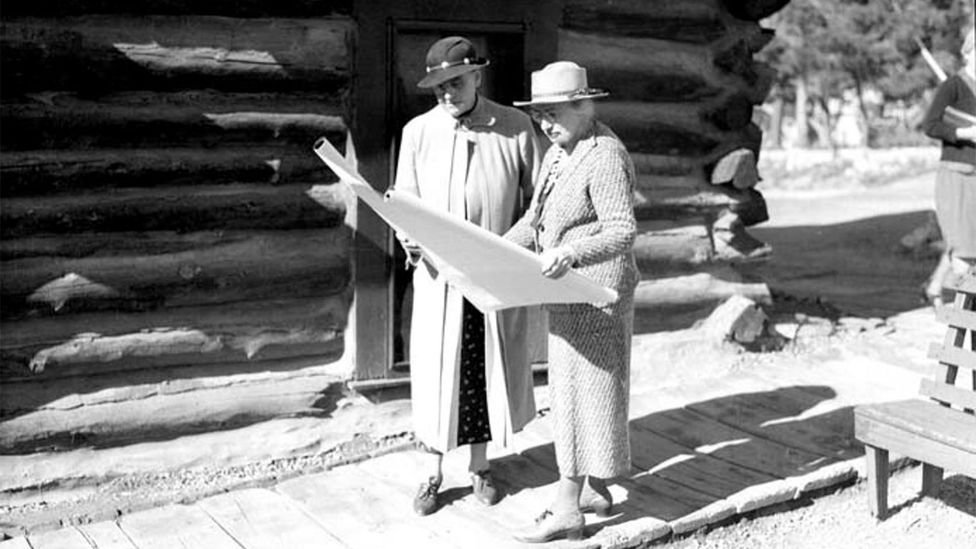
Colter was a rare breed: a white woman in a male-dominated field who rejected European design to honour Native American culture (Credit: Natural History Archive/Alamy)
Colter's first assignment for Fred Harvey was to design the interior of the Indian Building at the Alvarado Hotel in Albuquerque. The floorplan led visitors past Native American artefacts to shops where travellers could buy their own Indigenous crafts. Harvey wanted to showcase high-quality crafts linked to Indigenous cultures, so his company hired Native American artists to demonstrate their techniques, including Navajo weaver Elle of Ganado, who wove blankets in the building. She eventually became one of the most famous Native American artists of the era.
Colter's interest in Native American culture began when an uncle gave the family a series of sketches by Sioux prisoners who'd been interned in Montana in the 1870s. Colter kept the drawings and nurtured a lifelong interest in Native American culture, collecting art, attending dances and travelling throughout the Southwest and Mexico to study Native and Hispanic art and architecture.
Along the way, Colter developed strong ties to Southwest Native American communities. At Colter's El Navajo Hotel, in Gallup, New Mexico, prominent Navajo medicine man, Miquelito, helped create 12 Navajo sand paintings on the hotel's walls. And at El Navajo's grand opening in 1923, 2,000 Native Americans were in attendance, including 15 well-known Navajo medicine men who led chants and blessings. Her Native American-inspired buildings in the Grand Canyon had similar opening ceremonies, and the opening of the Desert View Watchtower in 1933 featured blessings led by Hopi elders.
The El Navajo was demolished in 1957, much to Colter's dismay. Many of her other railroad-associated buildings survived but fell into disuse with the rise of car travel.
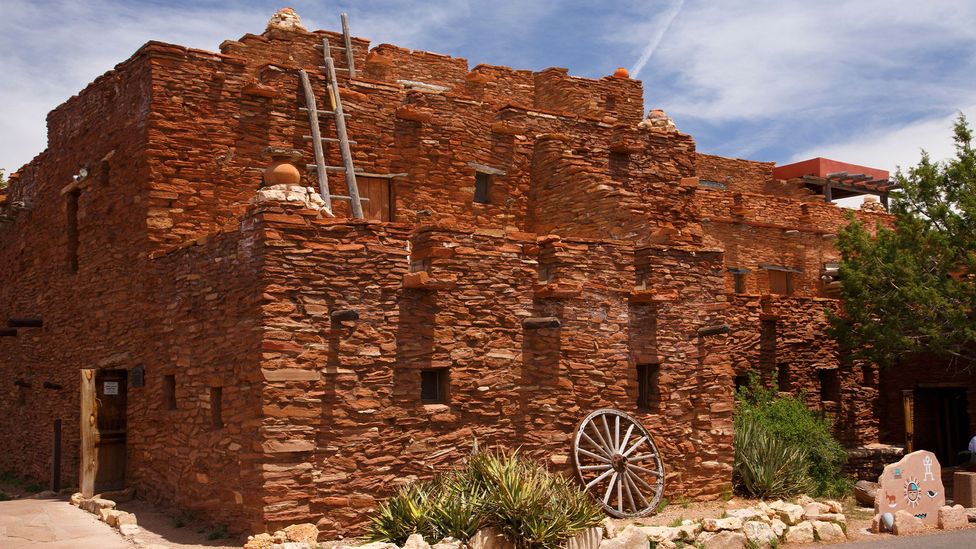
The Hopi House, which Colter designed in 1905, was modelled after the 1,000-year-old dwellings of the Hopi village in Oraibi, Arizona (Credit: Niebrugge Images/Alamy)
Today, the Grand Canyon is home to the greatest concentration of Colter's remaining work. Of her eight canyon buildings, four were declared National Landmarks in 1987: Hopi House, Lookout Studio, Hermit's Rest and the Watchtower.
To visit the Watchtower, I'd driven 1.5 hours north from Flagstaff, Arizona, to the park's East entrance. I was travelling solo and had the ghost of Colter at my side – a chain-smoking, Stetson-wearing "incomprehensible woman in pants", according to the well-known Western author Frank Waters.
My route cut through the Navajo Nation, the largest Native American reservation in the US. The Navajo are one of 11 tribes with ties to the Grand Canyon area, including the Hopi, whose mesa-top villages are some of the longest continuously occupied settlements in what is now the US.
Several of Colter's Grand Canyon buildings evoke the Hopi, a matrilineal society known for its painters and potters. Along with other Pueblo tribes, the Hopi trace their lineage back to the Ancestral Puebloans, who built the cliff dwellings and towers that inspired Colter's Watchtower. Colter travelled to ruins like Hovenweep and Mesa Verde to study building techniques, and was a stickler for detail during construction. The Desert Watchtower is made of stones from the area painstakingly fitted together.
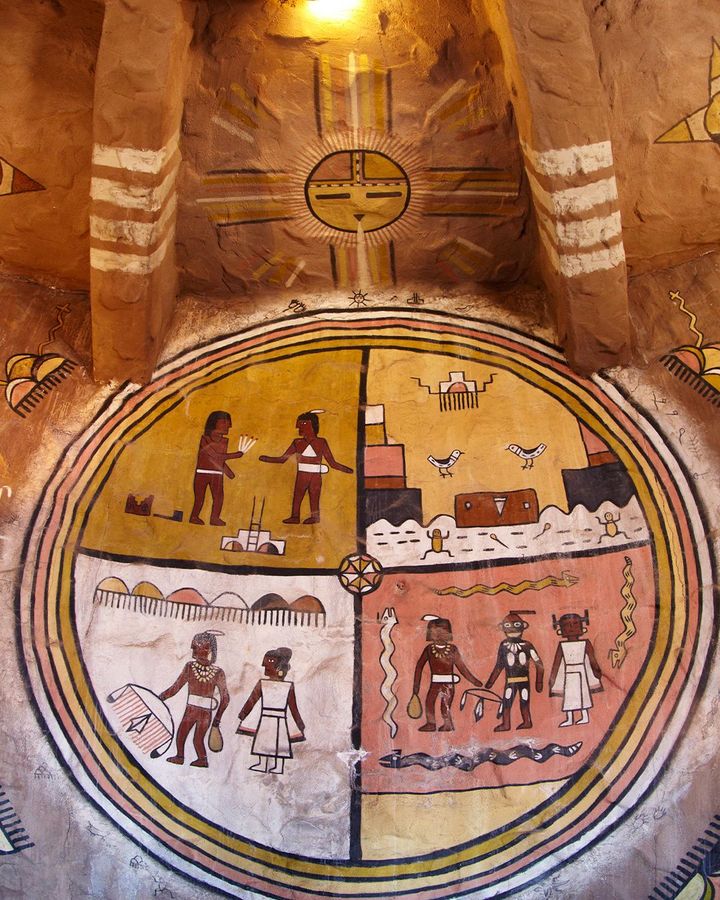
Colter hired Hopi artist Fred Kabotie to paint designs on the interior of the Desert Watchtower (Credit: David Wall/Alamy)
The Watchtower's lobby recalls a kiva, a circular ceremonial space found in Pueblo culture. Colter hired artists, including Hopi painter Fred Kabotie, to paint designs on the tower's interior. Ed Kabotie (Tewa/Hopi), Fred's grandson and an artist in his own right, was recently part of a team working to conserve paintings by his grandfather and others in the Watchtower. The effort was part of the Desert View Tribal Heritage Project, initiated in 2015 to make the Watchtower "a place to celebrate, share, and learn about inter-tribal cultural heritage", according to the National Park Service.
Kabotie recognised Colter's Watchtower as "an effort to give tribute to the ancient people of the Colorado Plateau". Echoing the concerns of many that Colter commodified Native American culture, Kabotie "had a problem with taking things from ancestral sites and using them here at the Watchtower". Though most of the Native American-inspired art inside the Watchtower was created for the site, Colter also took petroglyphs from Arizona's Ash Fork region to include in her design.
The Hopi House (1905) is modelled on traditional Hopi Pueblo dwellings. It's a multi-tiered sandstone structure, with the roof of one level serving as the terrace of another. It was built by Hopi workers and employed Native artists, who were presented to tourists as a sort of living diorama.
Some would say that Colter leaned towards "staged authenticity", but she was at least meticulous about that authenticity. Waters wrote that she made sketches of prehistoric Pueblo ruins, studying details of construction, the composition of adobes and washes. "She could teach masons how to lay adobe bricks, plasterers how to mix washes, carpenters how to fix viga [wooden beam] joints," he said.
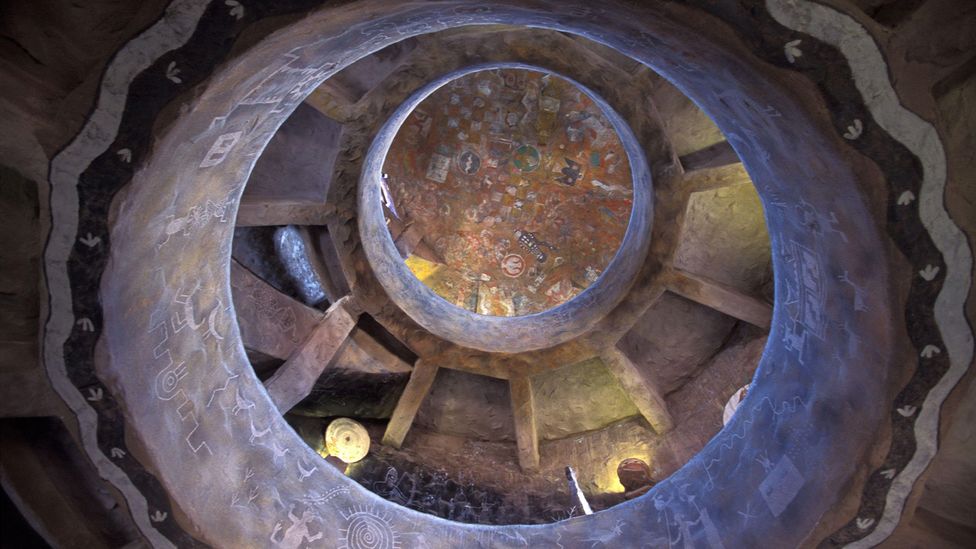
Colter served as a sort of cultural bridge between Native peoples and white tourists (Credit: Jorge Tutor/Alamy)
If Colter was complicit in commodifying Native culture, she also served as a cultural bridge, inviting tourists into evocative re-imaginings of a Hopi dwelling and an Ancestral Puebloan tower. "She's still educating tourists today through her work", said Blackgoat.
In a nod to its origins, The Desert Watchtower has now morphed into a Tribal Arts Center, where Native American artists demonstrate their crafts and educate visitors about their connection to the Canyon. As I was about to leave, a woman with a German accent and a tour bus ID asked me if I knew when the Watchtower had been built and who had designed it.
As it happened, I did.
Rediscovering America is a BBC Travel series that tells the inspiring stories of forgotten, overlooked or misunderstood aspects of the US, flipping the script on familiar history, cultures and communities.
---
Join more than three million BBC Travel fans by liking us on Facebook, or follow us on Twitter and Instagram.
If you liked this story, sign up for the weekly bbc.com features newsletter called "The Essential List". A handpicked selection of stories from BBC Future, Culture, Worklife and Travel, delivered to your inbox every Friday.
